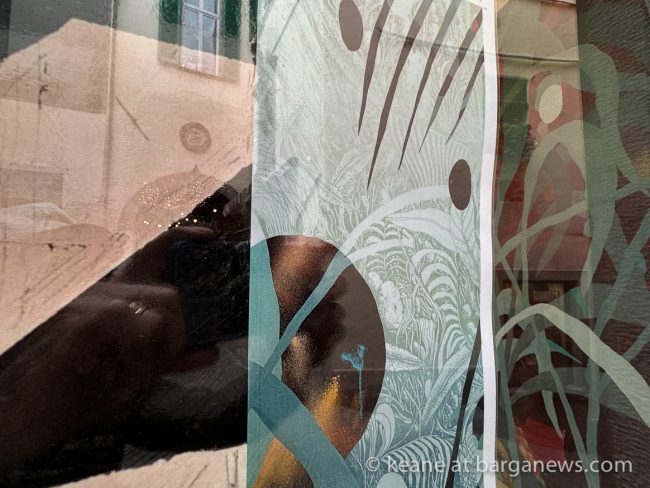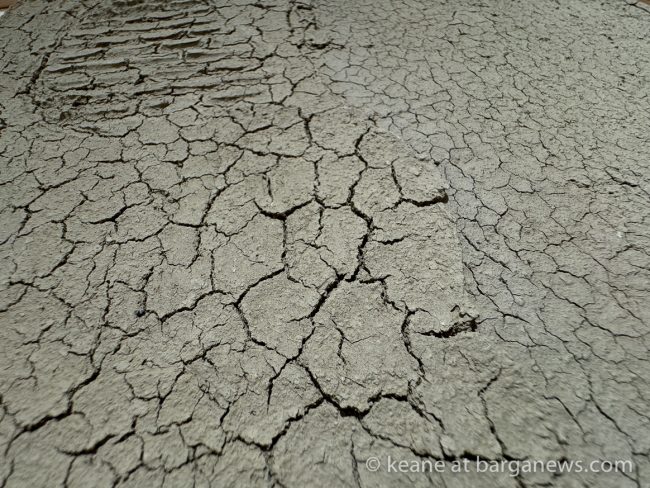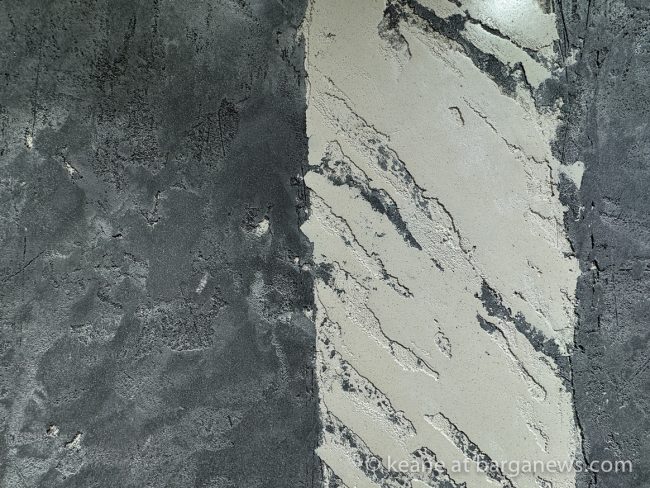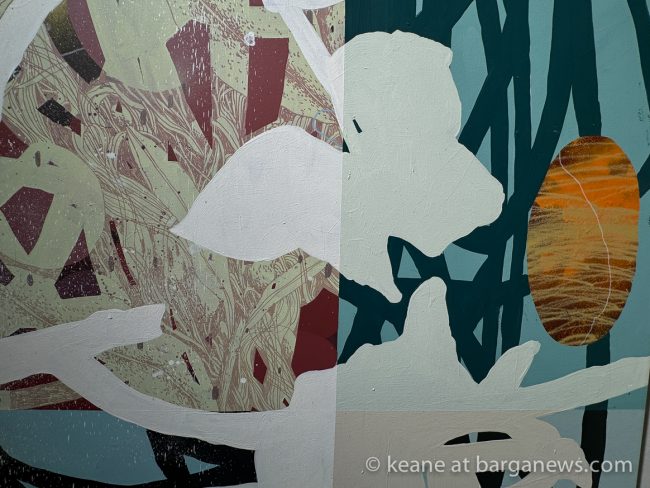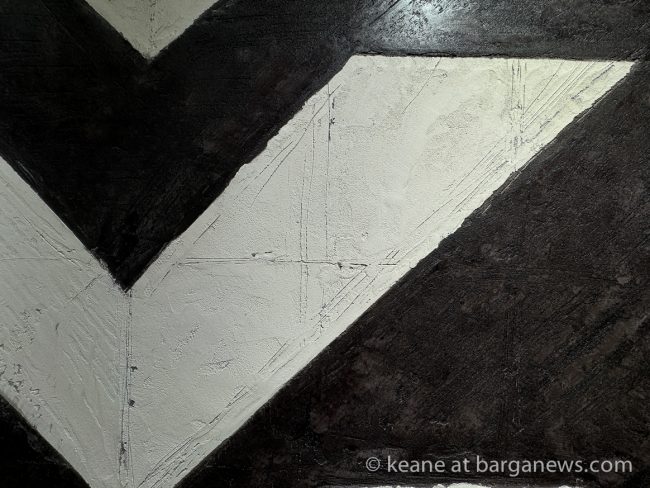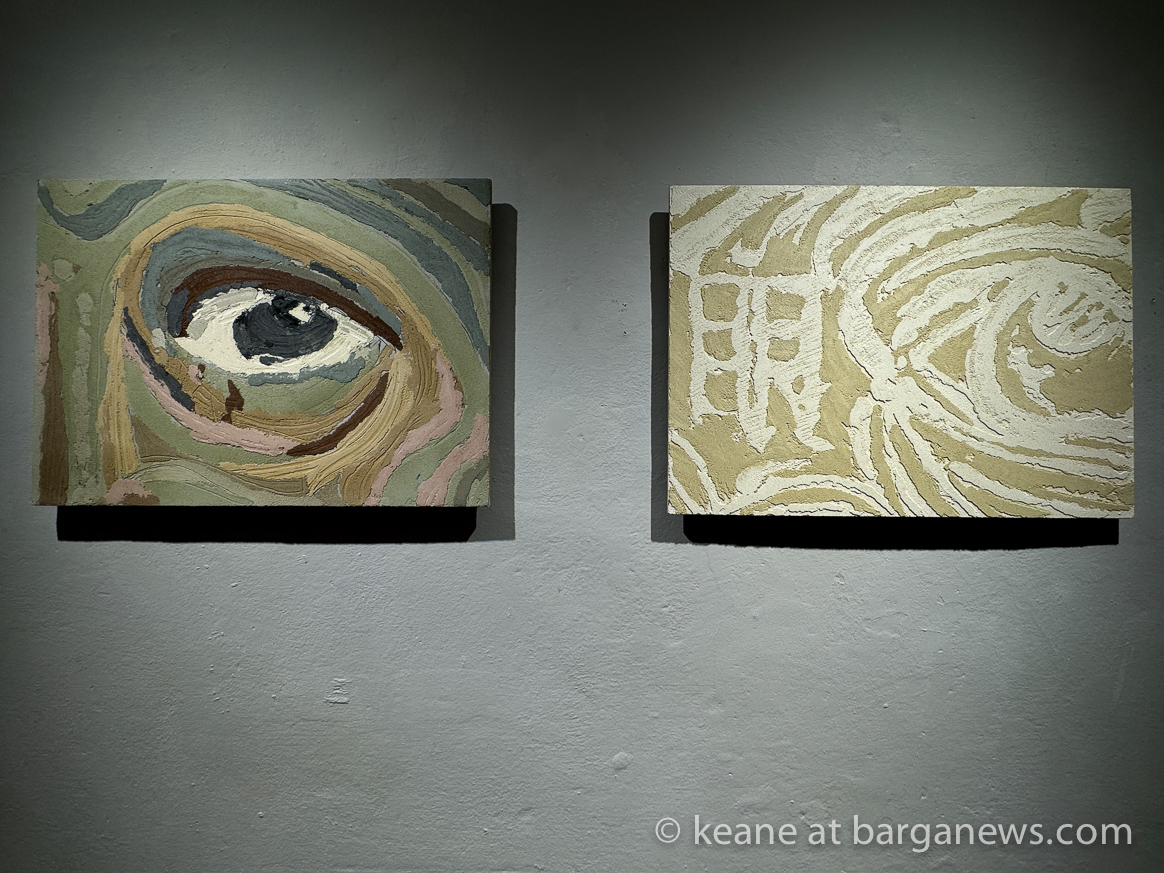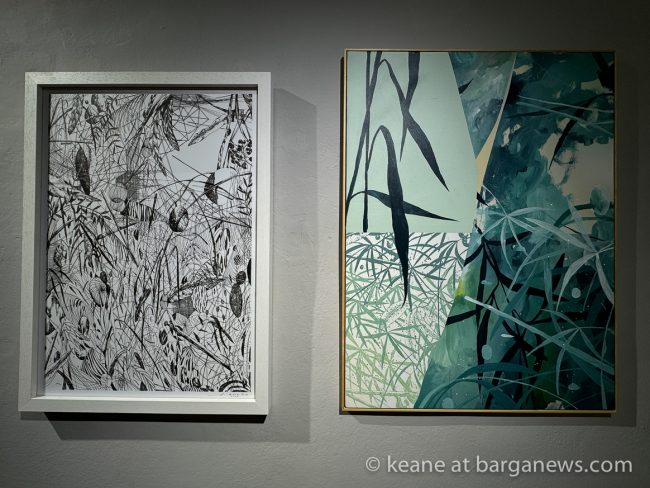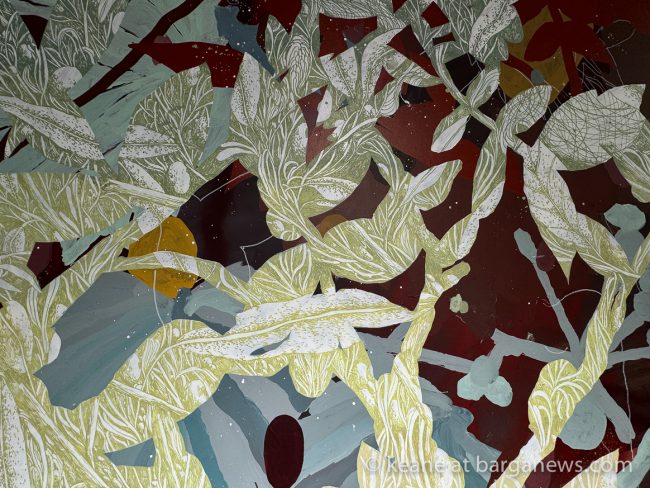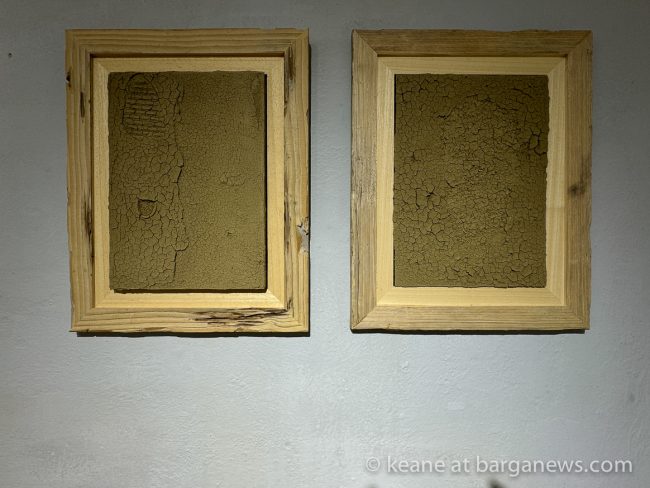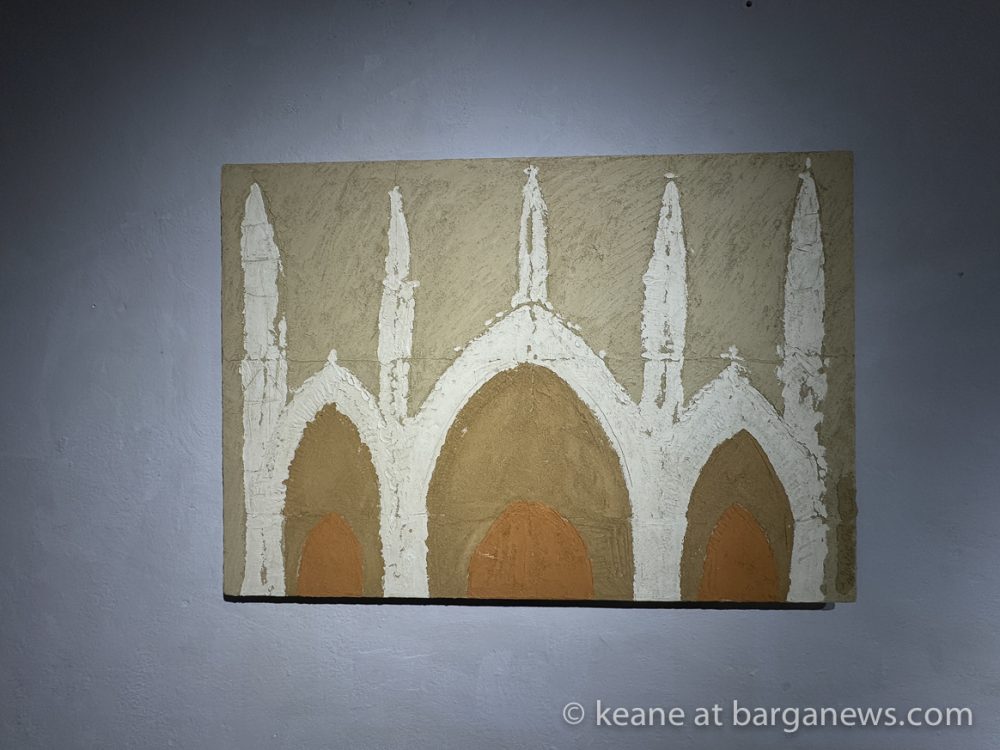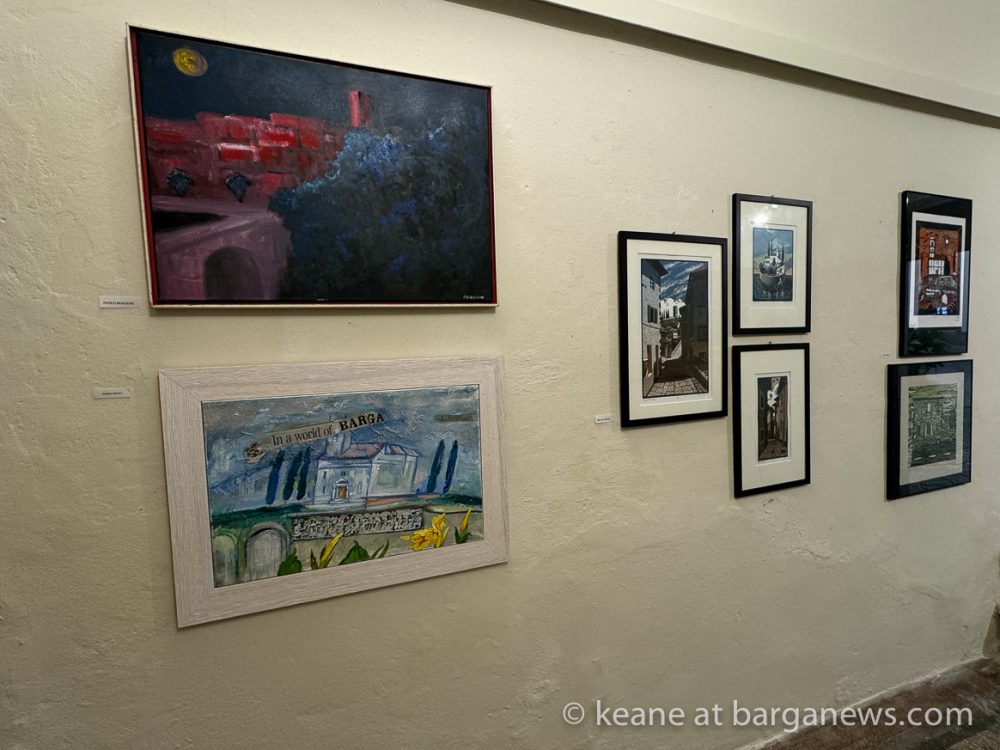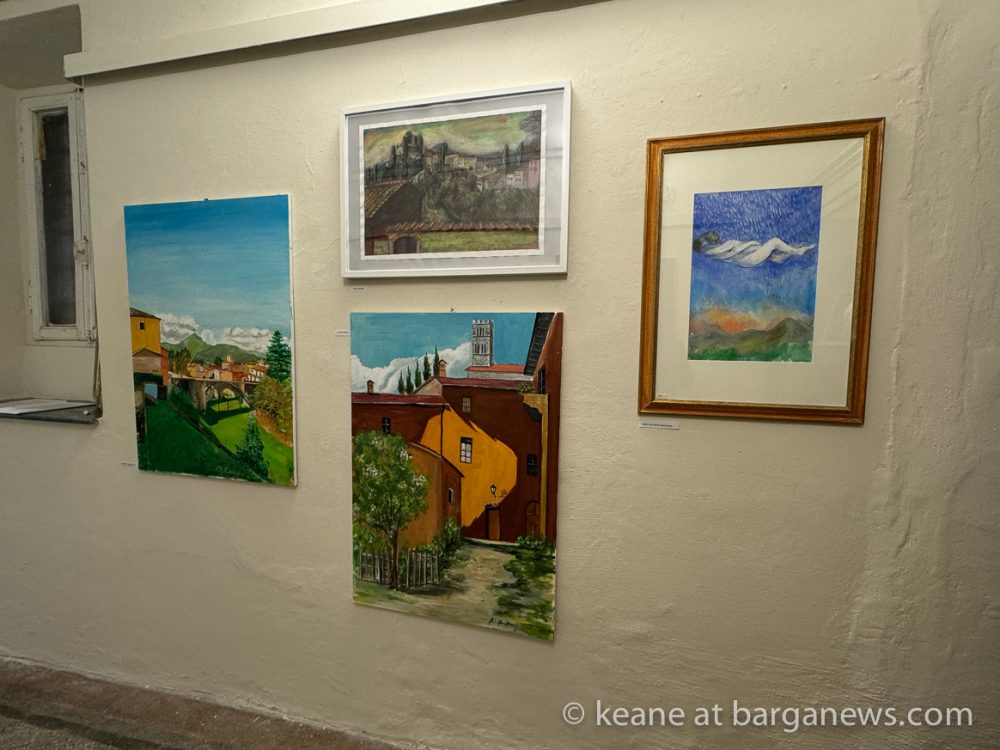A Return to Roots
The Earth, ever so familiar and yet elusive, is often thought of as mother: she generates, nourishes, and holds the key to our belonging. But what if the Earth is also something more? A substance, a medium, something that can be grasped and shaped? This is the question posed by “Abstracta,” a quiet, contemplative exhibition at the Municipal Gallery of Barga.
Barga, nestled in the Tuscan hills, has long been a place of departures. For centuries, its people have fled the stony streets, crossing borders and oceans in search of something—anything—else. But in recent years, a reversal has taken place. The emigrants have begun to return, their suitcases not only filled with foreign riches but with new ties, new connections that reach far beyond the piazzas and olive groves of their youth. They have brought with them, too, a sense of internationalism, for Barga is no longer a provincial Italian town; it has become, through the constant ebb and flow of its people, something more.
This is particularly true of its bond with Scotland, which has deepened over the years. It is a curious connection, one strengthened by the comings and goings of countless families who found themselves divided by sea but united by blood. It is here, in this space between home and abroad, that “Abstracta” finds its footing.
Fabrizio Da Prato, a local man born in nearby Castelnuovo di Garfagnana, has taken the soil itself and made it into art. It is not painting in the traditional sense—no, it is something more tactile, almost sculptural. Samples of earth from the Serchio Valley, varying in color and texture, have been layered onto canvas, each one a whisper of the land from which it came. One cannot help but feel that these works are not merely abstractions, but offerings to the Earth itself, as though Da Prato were trying to return something long taken.
Tellas, a Sardinian painter with a fondness for Tuscany, approaches the earth differently. His abstraction is born from nature, but it is not bound to it. His compositions, though inspired by the hills and woods around him, drift away into the realm of the imagined. There is something dreamlike in his work, as though he has taken a deep breath of fresh air and exhaled a world not quite real.
But this exhibition is not just about the individual artists. It is a conversation—a dialogue, if you will—with the wider artistic community of Barga. Riccardo Bertoni, Giuseppe Cristofani, Paolo Biagioni, Sandra Rigali, Nick Kraczyna, Petra Wend, Alba Calamari, and Jane Richardson have all contributed, their works reflecting the territory around them in ways both subtle and profound. Together, these artists ask the question: how does the land shape us, and in turn, how do we shape it?
“The Earth and nature have always been our first horizon,” says Gian Guido Grassi. “For millennia, man has tried to depict what he saw around him, but with abstraction, we find something deeper, something beyond the iconographic.” Grassi is right, of course, but what he does not say—and what hangs quietly in the gallery—is that abstraction is not just an escape from representation. It is a return, a way of finding our way back to something we had lost: our connection to the land, to the Earth that birthed us and will one day reclaim us.
“Abstracta” opens as part of the Scottish Weekend, an event dedicated to Barga’s vibrant Scottish community. There is something fitting in this—a coming together of two lands, two peoples, bound by history and fate. And yet, as the works on the walls suggest, it is not just about Scotland or Italy. It is about all of us, about the ways we leave and the ways we return. The Earth, it seems, has its own way of calling us back.
The Galleria Comunale di Barga is open Thursday through Sunday from 18.00 to 20.00
 |
 |
 |
 |
Un Ritorno alle Radici
La Terra, così familiare eppure sfuggente, è spesso pensata come madre: genera, nutre e detiene la chiave del nostro senso di appartenenza. Ma e se la Terra fosse qualcosa di più? Una sostanza, un mezzo, qualcosa che può essere afferrato e plasmato? È questa la domanda posta da “Abstracta,” una mostra tranquilla e contemplativa presso la Galleria Comunale di Barga.
Barga, incastonata tra le colline toscane, è stata a lungo un luogo di partenze. Per secoli, la sua gente ha lasciato le strade lastricate e ha attraversato confini e oceani alla ricerca di qualcosa, qualsiasi cosa, di diverso. Ma negli ultimi anni, è avvenuto un rovesciamento. Gli emigranti hanno iniziato a tornare, con le valigie non solo piene di ricchezze straniere, ma anche di nuovi legami, nuove connessioni che vanno ben oltre le piazze e gli uliveti della loro giovinezza. Hanno portato con sé anche un senso di internazionalismo, poiché Barga non è più un semplice paese italiano di provincia; è diventata, attraverso il costante flusso e riflusso della sua gente, qualcosa di più.
Questo è particolarmente vero per il suo legame con la Scozia, che si è approfondito nel corso degli anni. È una connessione curiosa, rafforzata dagli andirivieni di innumerevoli famiglie che si sono trovate divise dal mare ma unite dal sangue. È qui, in questo spazio tra casa e lontananza, che “Abstracta” trova il suo fondamento.
Fabrizio Da Prato, un uomo del posto nato a Castelnuovo di Garfagnana, ha preso la terra stessa e l’ha trasformata in arte. Non si tratta di pittura nel senso tradizionale — no, è qualcosa di più tattile, quasi scultoreo. Campioni di terra della Valle del Serchio, variando in colore e consistenza, sono stati stratificati sulla tela, ognuno un sussurro della terra da cui proviene. Non si può fare a meno di sentire che queste opere non sono semplicemente astrazioni, ma offerte alla Terra stessa, come se Da Prato stesse cercando di restituire qualcosa di a lungo perduto.
Tellas, un pittore sardo con un’affezione per la Toscana, si avvicina alla terra in modo diverso. La sua astrazione nasce dalla natura, ma non è vincolata ad essa. Le sue composizioni, sebbene ispirate dalle colline e dai boschi circostanti, si allontanano nel regno dell’immaginario. C’è qualcosa di onirico nel suo lavoro, come se avesse inspirato profondamente aria fresca ed esalato un mondo non del tutto reale.
Ma questa mostra non riguarda solo i singoli artisti. È una conversazione — un dialogo, se si vuole — con la più ampia comunità artistica di Barga. Riccardo Bertoni, Giuseppe Cristofani, Paolo Biagioni, Sandra Rigali, Nick Kraczyna, Petra Wend, Alba Calamari e Jane Richardson hanno tutti contribuito, con opere che riflettono il territorio circostante in modi sia sottili che profondi. Insieme, questi artisti pongono la domanda: come ci modella la terra e, a nostra volta, come la modifichiamo noi?
“La Terra e la natura sono sempre state il nostro primo orizzonte,” dice Gian Guido Grassi. “Per millenni, l’uomo ha cercato di rappresentare ciò che vedeva intorno a sé, ma con l’astrazione troviamo qualcosa di più profondo, qualcosa oltre l’iconografia.” Grassi ha ragione, naturalmente, ma ciò che non dice — e che si avverte silenziosamente nella galleria — è che l’astrazione non è solo una fuga dalla rappresentazione. È un ritorno, un modo per ritrovare qualcosa che avevamo perso: il nostro legame con la terra, con la Terra che ci ha generati e che un giorno ci reclamerà.
“Abstracta” si apre nell’ambito dello Scottish Weekend, un evento dedicato alla vivace comunità scozzese di Barga. C’è qualcosa di appropriato in questo — un incontro tra due terre, due popoli, legati dalla storia e dal destino. Eppure, come suggeriscono le opere esposte, non si tratta solo della Scozia o dell’Italia. Si tratta di tutti noi, dei modi in cui partiamo e dei modi in cui torniamo. La Terra, a quanto pare, ha il suo modo di richiamarci indietro.


